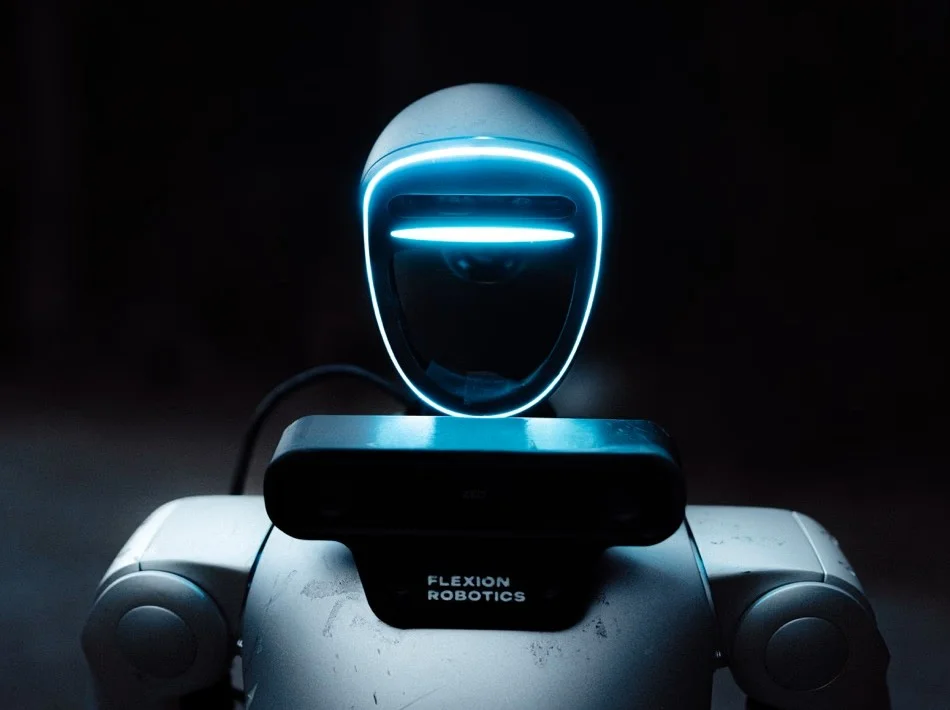Flexion has announced a significant milestone in its mission to build the intelligence layer that will power the next generation of humanoid robots. The company has raised $50 million in a Series A funding round that brings new momentum to its ambition of creating more adaptive, capable and autonomous robotic systems.
This latest investment comes from a strong lineup of backers, including DST Global Partners, NVentures, Redalpine, Prosus Ventures and Moonfire. It follows the company’s earlier seed round of 7.35 million dollars raised only a few months prior, underlining investor confidence in Flexion’s vision and progress.
Bridging the Gap Between Robotics and General Intelligence
For decades, robotics has been limited by rigid, task specific systems that struggle when faced with unpredictable environments. Robots could perform well inside controlled settings, but real world tasks, from disaster response to industrial labour, demand adaptability and learning. Traditional systems have relied heavily on scripted behaviours and extensive human involvement. Hours of demonstrations and large tele operation teams were needed to enable even single tasks.
Flexion sees this as an obstacle to true scalability. As generative artificial intelligence reshapes software through reasoning, creativity and automation, the company believes robotics must follow the same trajectory. Robots should not only move but also understand, learn and adapt.
Building an Autonomy Stack for Humanoids
Flexion’s response is a full autonomy stack designed to operate across different humanoid forms and task types. This stack consists of three core layers.
Command Layer. This uses language models to handle common sense reasoning. It interprets tasks described in natural language, breaks them down into subtasks and provides the grounding needed to understand complex environments.
Motion Layer. This combines vision, language and action models. It is trained mainly on synthetic data and then fine tuned for difficult real world situations, creating a more robust decision making system.
Control Layer. A transformer based control system that supports low latency, whole body movements. It includes a modular library of skills that allows rapid creation of new behaviours.
Together, these layers aim to remove the need for scripts, tele operation farms or brittle logic. Instead, Flexion is building robots that learn from experience and operate with minimal human input.
Humanoid Robots at a Turning Point
While hardware in robotics has advanced rapidly, the intelligence behind humanoids has lagged behind. Many new robots appear impressive but still struggle with useful deployment outside specialised environments. Flexion argues that the missing component is not better mechanics but better intelligence.
The timing for this breakthrough feels right. The same computing power and training infrastructure that enabled large language models is now available to robotics. At the same time, global labour shortages and demographic challenges are placing new pressure on industrial output. With a third of the developed world expected to be over 60 by 2050, humanoid robots are increasingly seen as essential rather than speculative.
Also Read: Mirantus Health: Company Overview, Funding, Leadership and Technology
Scaling Teams, Partnerships and Deployment
With its new 50 million dollar investment, Flexion plans to grow its Zurich based research and development team, expand robot fleets and computing resources, and build a stronger presence in the United States. The funding will also accelerate commercial deployment of its autonomy stack.
The company is already collaborating with major original equipment manufacturers, and the new investment is expected to help expand these partnerships globally.
Backed by Deep Technical Expertise
Flexion’s founding team brings together experts with backgrounds from ETH Zurich, NVIDIA, Meta, Google, Tesla and Amazon. Their experience spans reinforcement learning, perception, control systems and large scale simulation. The company describes itself as the product of many years spent overcoming the technical challenges that have hindered scalable robotics.
A Mission to Build the Brain of Humanoid Robots
Flexion believes that autonomy will define the future of robotics. Rather than building the physical form of robots, the company is focused on providing the intelligence that powers them. Its mission is to enable robots to support humans rather than rely on human control.
Although the challenge is significant, Flexion remains committed to the long term goal. The company invites roboticists, engineers and partners who are ready to push the boundaries of the field to connect and contribute.
Flexion’s latest funding marks an important step in the evolution of humanoid robotics and places the company at the centre of a shift towards more capable, adaptive and intelligent machines.

